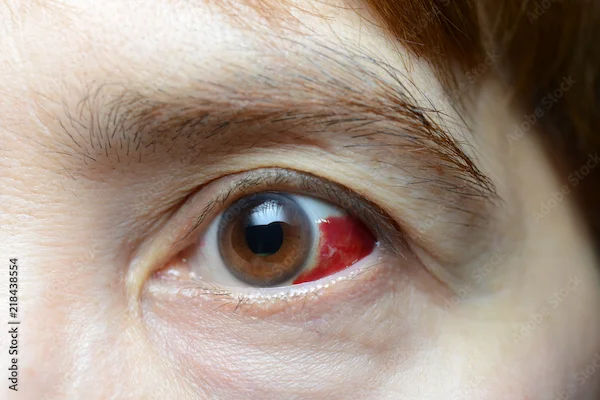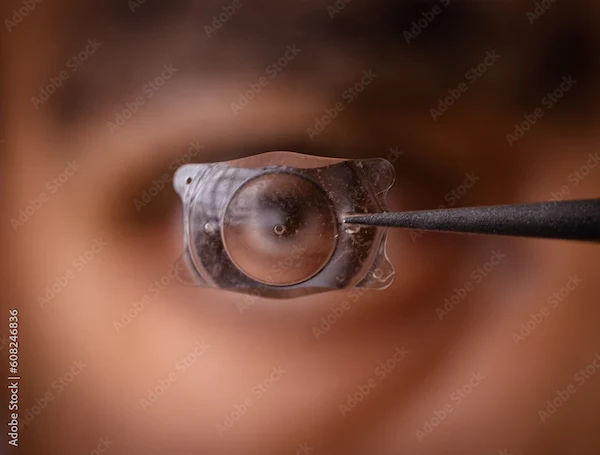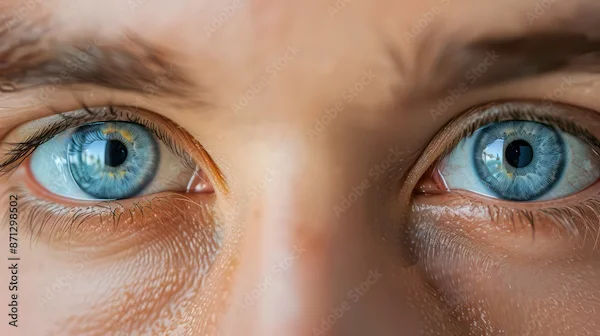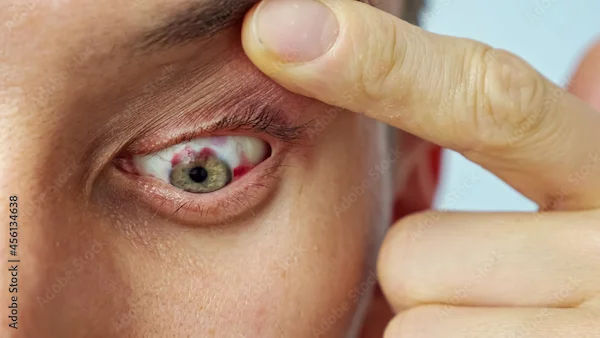How Common Is Vitreous Detachment After Cataract Surgery?
Learn how common vitreous detachment is after cataract surgery, why it happens, and what symptoms to watch for. Understand the risks and how to manage this eye condition effectively

Written by
Last updated on 4th Jul, 2025

Introduction
Cataract surgery is one of the most common and successful eye procedures performed worldwide. It helps restore clear vision by replacing the cloudy natural lens with an artificial one. However, like any surgery, it can sometimes lead to minor complications or changes in the eye. One such change is posterior vitreous detachment (PVD), a condition where the gel-like substance inside the eye (the vitreous) separates from the retina. If you’ve recently had cataract surgery or are planning to, you might be wondering, how common is vitreous detachment after this procedure? Let’s explore this topic in simple terms to help you understand what to expect and when to seek medical advice.
What Is Vitreous Detachment?
The vitreous is a clear, gel-like substance that fills the space between the lens and the retina (the light-sensitive layer at the back of the eye). As we age, this gel naturally becomes more liquid and can shrink, leading to posterior vitreous detachment (PVD)—a condition where the vitreous pulls away from the retina.
Symptoms of Vitreous Detachment
Symptoms of vitreous detachment are:
Floaters: Small dark spots or squiggly lines that drift across your vision.
Flashes of light: Brief streaks of light, especially noticeable in dim lighting.
A sudden increase in floaters or flashes, which may indicate a more serious issue like a retinal tear.
Most cases of PVD are harmless, but in rare cases, the vitreous can tug on the retina too hard, causing a tear or detachment, which requires immediate medical attention.
Consult Top Specialists for Personalised Tips
How Common Is PVD After Cataract Surgery?
Research suggests that cataract surgery can slightly increase the risk of vitreous detachment, especially in older adults. Here’s what studies show:
Age plays a big role: PVD is more common in people over 50 and becomes increasingly likely with age.
Cataract surgery may accelerate PVD: The procedure can cause minor changes in the eye’s structure, making the vitreous more likely to detach sooner than it might have naturally.
Estimated occurrence: Studies indicate that about 10-20% of people may develop PVD within a year after cataract surgery, compared to the natural ageing process where PVD happens gradually.
Why Does Cataract Surgery Increase the Risk?
During cataract surgery, the natural lens is removed, which can alter the pressure and support within the eye. This change may cause the vitreous to shift slightly, increasing the chances of detachment.
Should You Be Worried?
In most cases, PVD is a normal part of ageing and not a cause for alarm. However, if you notice:
A sudden shower of new floaters
Persistent flashes of light
A dark curtain or shadow spreading across your vision
You should see an eye specialist immediately, as these could be signs of a retinal tear or detachment, which needs urgent treatment to prevent vision loss.
Tips for Managing Vitreous Detachment
If you experience PVD after cataract surgery, here’s what you can do:
1. Don’t panic: Most floaters and flashes fade over time as the brain adjusts.
2. Avoid sudden eye movements: Jerky motions (like rubbing your eyes too hard) may worsen symptoms.
3. Get regular eye check-ups: Your doctor can monitor any changes and ensure no complications arise.
4. Protect your eyes: Wear sunglasses outdoors to reduce glare and strain.
5. Stay hydrated: Good hydration helps maintain eye health.
When to See a Doctor?
While PVD itself is usually harmless, any sudden vision changes should be checked by an eye specialist. If you experience:
A sudden increase in floaters
Flashing lights that don’t go away
Loss of peripheral (side) vision
Book an appointment with an ophthalmologist immediately to rule out serious complications like retinal detachment.
Conclusion
Vitreous detachment after cataract surgery is relatively common, especially in older adults, but it’s rarely dangerous. Most people adapt to the floaters and flashes over time. However, staying alert to sudden changes in vision is crucial to catch any serious issues early. If you’ve had cataract surgery and notice new visual symptoms, don’t hesitate to consult an eye specialist. Early detection and care can help protect your vision and keep your eyes healthy.
Consult Top Eye Surgeon
Consult Top Specialists for Personalised Tips

Dr Rajesh Rastogi
Ophthalmologist
33 Years • MBBS, MS Ophthalmology
New Delhi
Rotary Diabetic Centre, New Delhi
Dr. Padmini S
Ophthalmologist
4 Years • MBBS,MS
Bengaluru
Apollo Medical Center, Marathahalli, Bengaluru
Dr. S Venkateswaran
Ophthalmologist
35 Years • MBBS, PGD (OPTHALMOLOGY)
Tiruvannamalai
Shiva Eye And General Hospital, Tiruvannamalai
Dr. V.chittibabu
Ophthalmologist
30 Years • MBBS, MS
Vellore
Krupa Eye Clinic, Vellore
Dr. Akashdipta Saha
Ophthalmologist
4 Years • MBBS, MD(Ophthalmology), Fellowship in Retina & Vitreous
Delhi
AIIMS, Delhi
Consult Top Eye Surgeon

Dr Rajesh Rastogi
Ophthalmologist
33 Years • MBBS, MS Ophthalmology
New Delhi
Rotary Diabetic Centre, New Delhi
Dr. Padmini S
Ophthalmologist
4 Years • MBBS,MS
Bengaluru
Apollo Medical Center, Marathahalli, Bengaluru
Dr. S Venkateswaran
Ophthalmologist
35 Years • MBBS, PGD (OPTHALMOLOGY)
Tiruvannamalai
Shiva Eye And General Hospital, Tiruvannamalai
Dr. V.chittibabu
Ophthalmologist
30 Years • MBBS, MS
Vellore
Krupa Eye Clinic, Vellore
Dr. Akashdipta Saha
Ophthalmologist
4 Years • MBBS, MD(Ophthalmology), Fellowship in Retina & Vitreous
Delhi
AIIMS, Delhi




